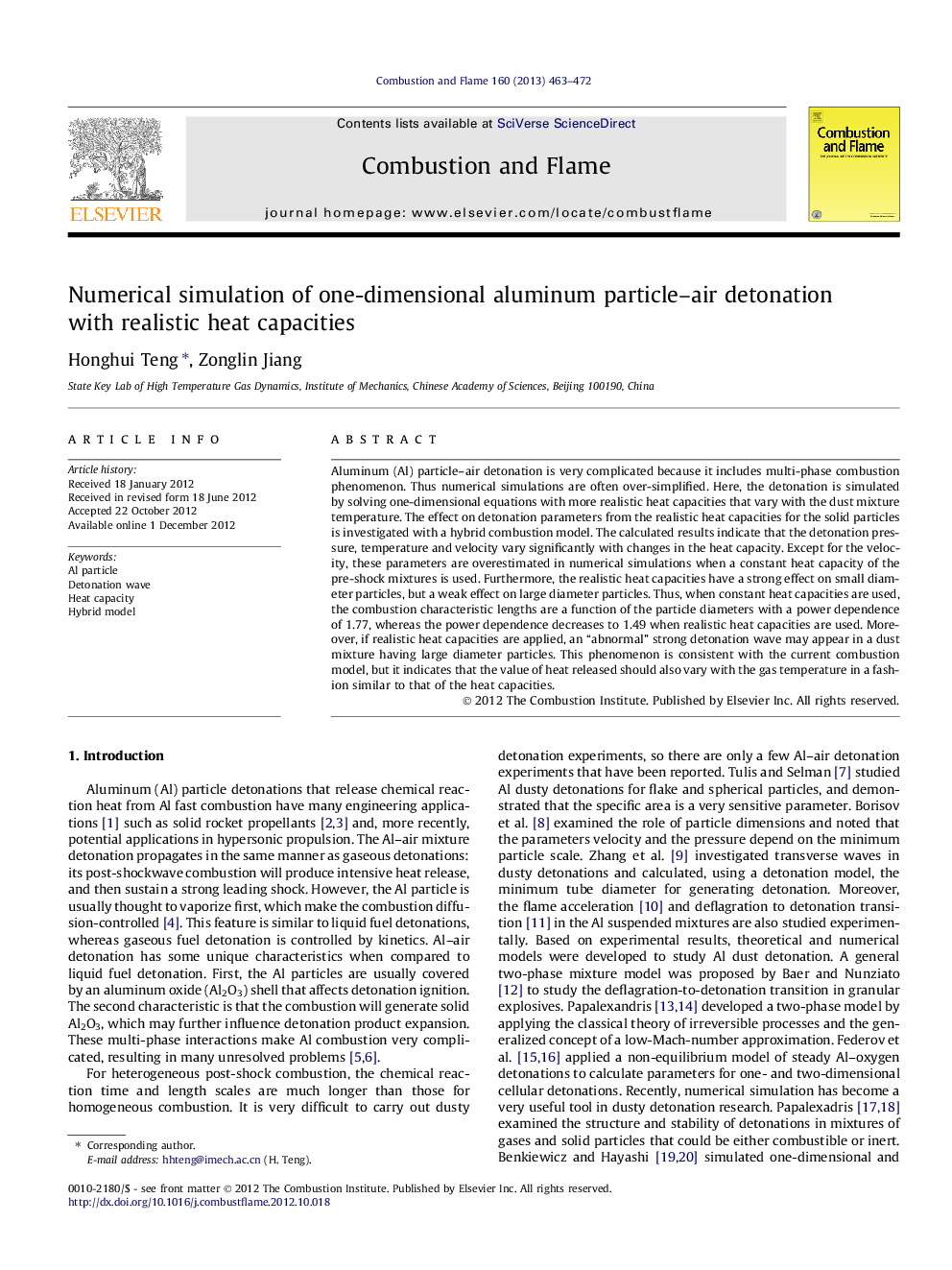| Article ID | Journal | Published Year | Pages | File Type |
|---|---|---|---|---|
| 10264742 | Combustion and Flame | 2013 | 10 Pages |
Abstract
Aluminum (Al) particle-air detonation is very complicated because it includes multi-phase combustion phenomenon. Thus numerical simulations are often over-simplified. Here, the detonation is simulated by solving one-dimensional equations with more realistic heat capacities that vary with the dust mixture temperature. The effect on detonation parameters from the realistic heat capacities for the solid particles is investigated with a hybrid combustion model. The calculated results indicate that the detonation pressure, temperature and velocity vary significantly with changes in the heat capacity. Except for the velocity, these parameters are overestimated in numerical simulations when a constant heat capacity of the pre-shock mixtures is used. Furthermore, the realistic heat capacities have a strong effect on small diameter particles, but a weak effect on large diameter particles. Thus, when constant heat capacities are used, the combustion characteristic lengths are a function of the particle diameters with a power dependence of 1.77, whereas the power dependence decreases to 1.49 when realistic heat capacities are used. Moreover, if realistic heat capacities are applied, an “abnormal” strong detonation wave may appear in a dust mixture having large diameter particles. This phenomenon is consistent with the current combustion model, but it indicates that the value of heat released should also vary with the gas temperature in a fashion similar to that of the heat capacities.
Related Topics
Physical Sciences and Engineering
Chemical Engineering
Chemical Engineering (General)
Authors
Honghui Teng, Zonglin Jiang,
